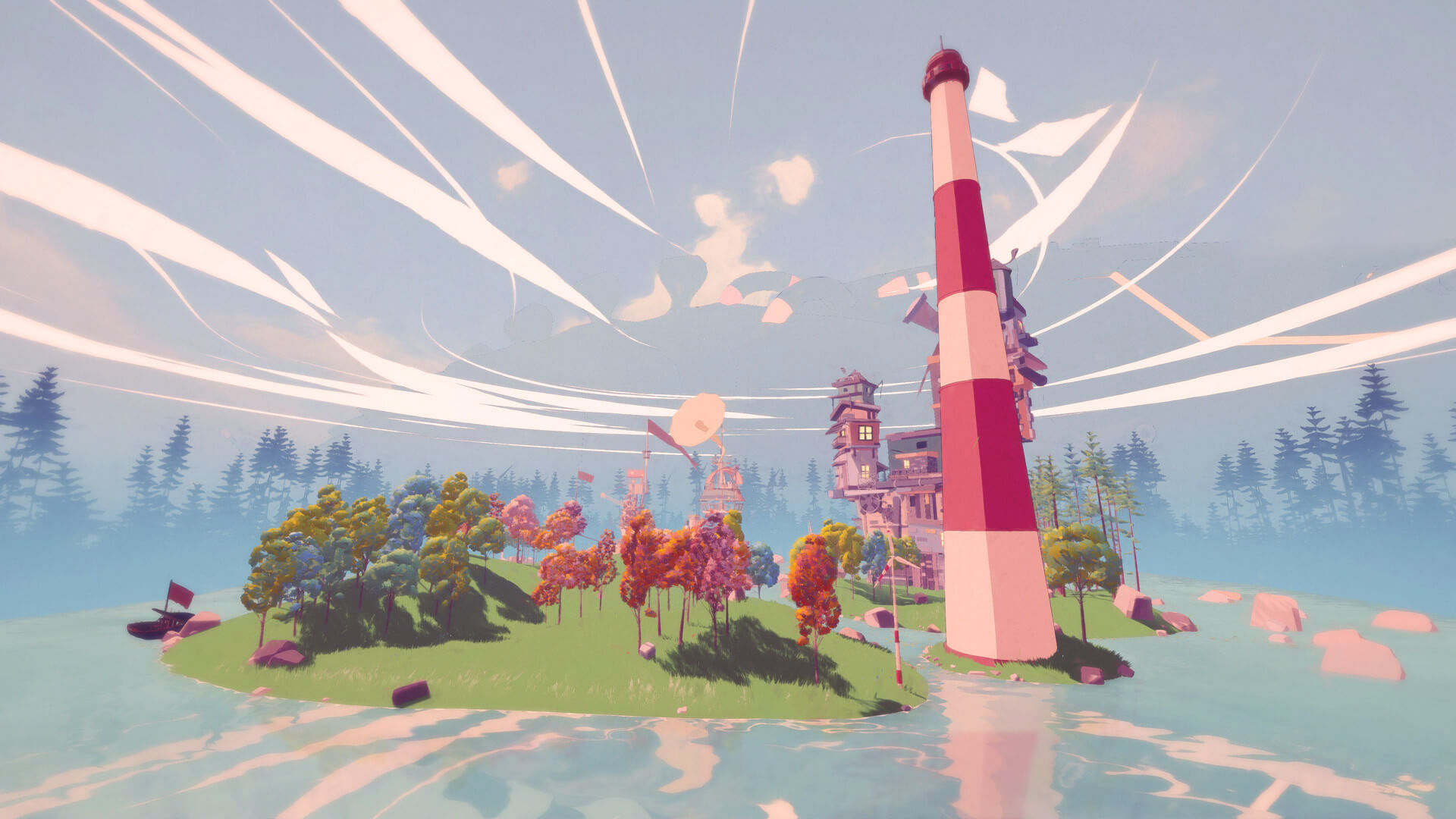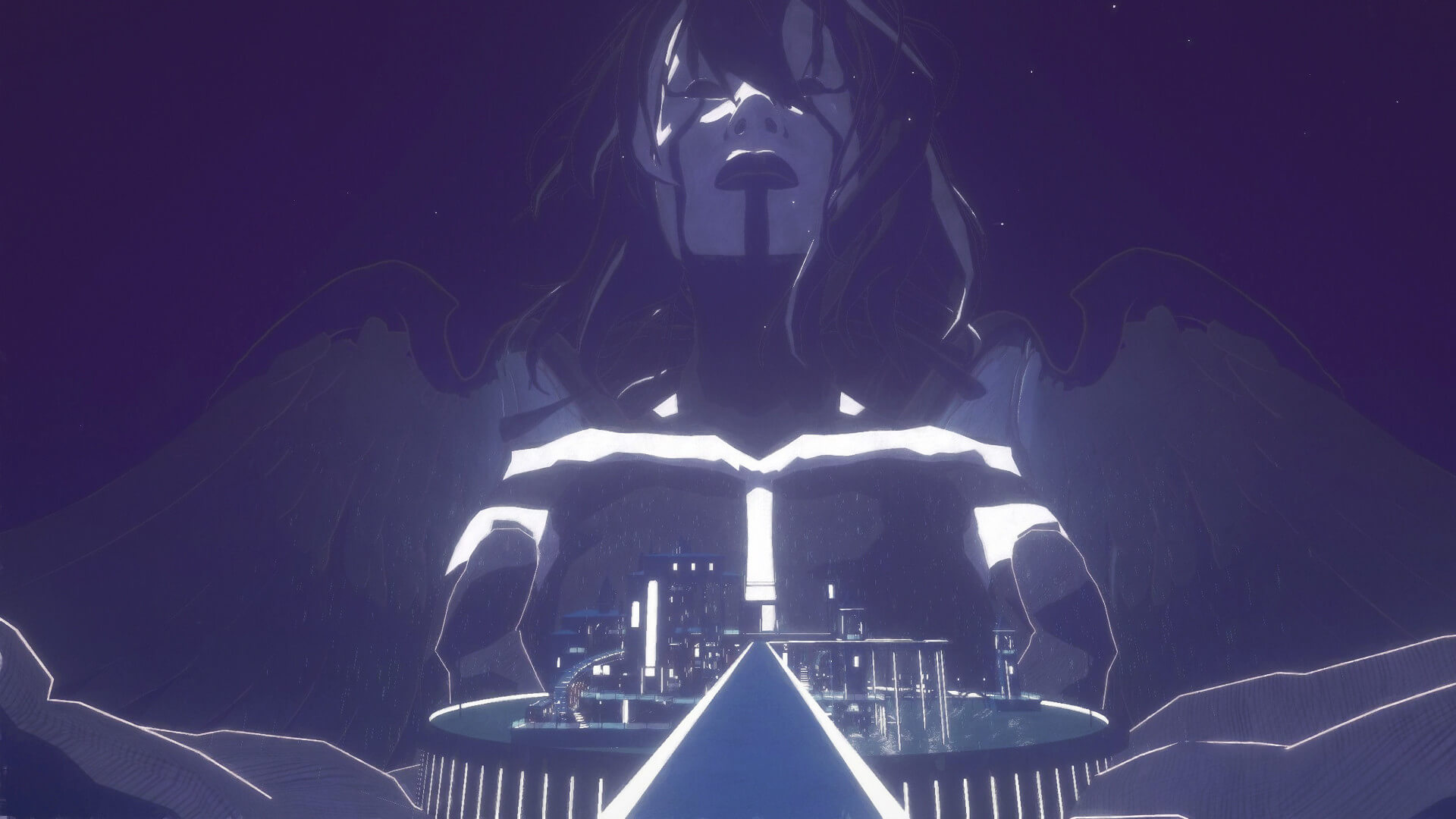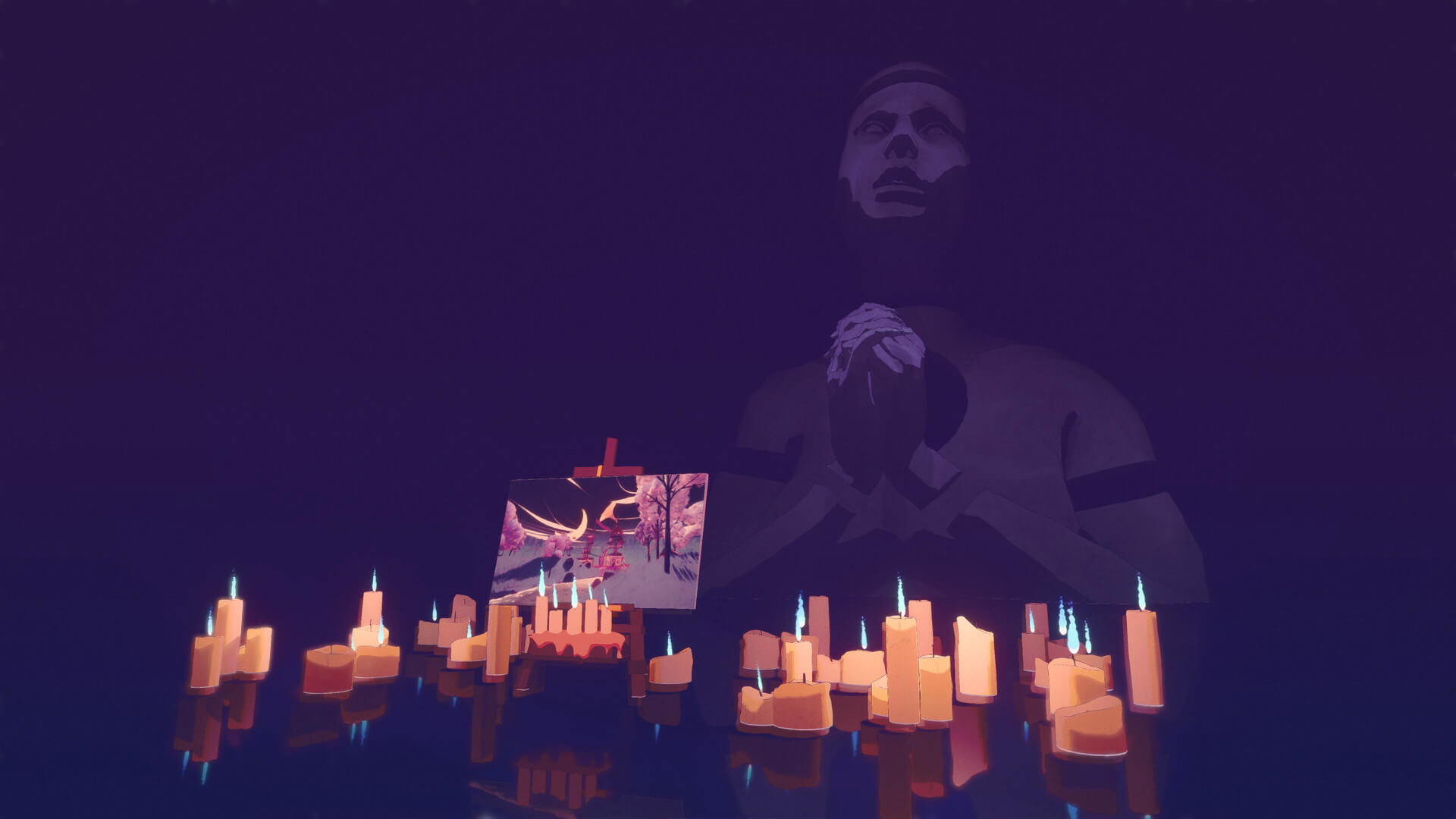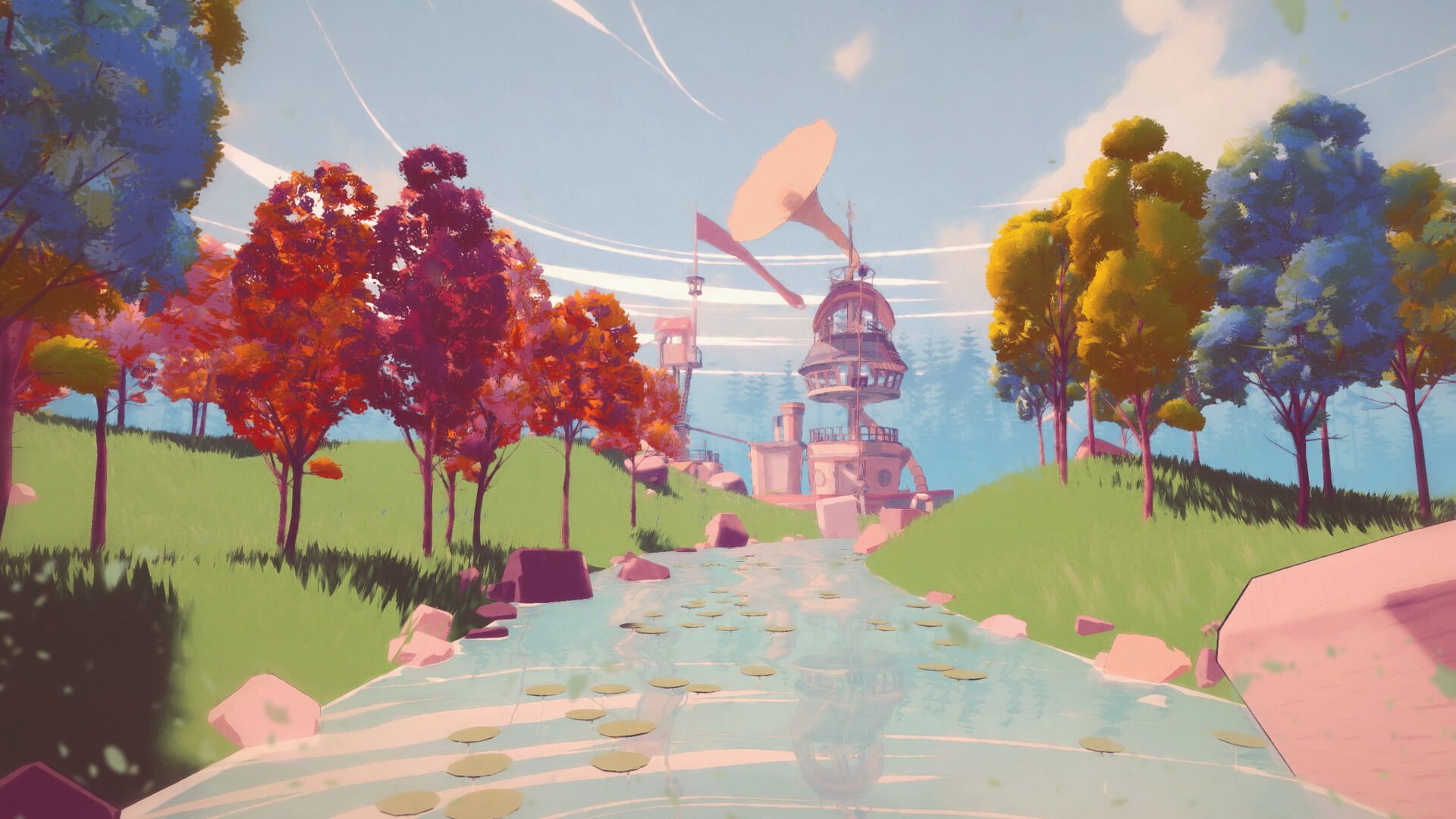Regardless of the creative medium, escaping into fiction is a draw for everyone at one time or another. It could just be an unprovoked yearning for unfettered adventure or a defense mechanism against one’s dismal situation. The latter is the context for new Italian developer DP Games’ first-person puzzler: Summertime Madness. Its greater potential is restrained by some uneven design, but it never felt uninteresting.
July 1945. The city of Prague is under siege. Among the current survivors within its walls is a lowly, nameless painter staying in his apartment. As the terrors of war worsen, as more buildings are shelled and more people killed, the harder he toils with his serene & colorful landscapes. One fateful night, a mysterious man materializes in his workspace and provides a unique opportunity: escape the horrid real world and venture into one of his own paintings. The catch? If he doesn’t escape the canvas by midnight, his soul will be trapped there forever. When God seems so distant and uninterested, who wouldn’t accept a pleasant deal from The Devil?
Summertime Breeze

One of Summertime’s greatest successes is its opening hook: the painter’s wretched reality & Joel Nilsson’s coarse narration are contrasted by a grassy field and a pleasant breeze when he wakes up. Within a succinct five minutes, you’re given the necessary info and are freely sauntering about. Then, a gargantuan hand with a swinging pocket watch materializes, gently reminding you that time is of the essence. You see: The Devil’s offer is baked into gameplay, so every in-game second is the same as the real world. You can still smell the roses, but it’s not wise to perpetually dawdle.
The beauty of its early puzzle design is exemplified by its first: little moves catenate into something more and more complex. Finding that sweet spot between ‘welcoming’ and ‘difficult’ is no small feat either. The considerations for pacing, environmental clues, and so on can be a headache for designers; so, it’s pleasant how these brainteasers continue feeling well-handled and diverse. Plus, it’s implicitly encouraging to continue as this surrealist painting keeps growing – with various houses and more coming out of the ground.
The pièce de résistance is Neo-Prague. From the evocative art design to the weaving of a split day/night level, it’s the standout example where I eventually knew every inch of its layout. It’s the biggest portion of the game, yet I still wanted more. We’re only in January and yet it’s already among the top puzzles of the year.
A Couple Maddening Missteps

In many ways, Neo-Prague acts as the start of Summertime’s second half. While still being a great start, a few succeeding puzzles go off the tracks. Eventually, there’s a heavier reliance on abstract hints versus intricate map knowledge and memory. One in particular ranks up there as the most pretentious way of breaking the fourth wall. A couple of others rely on a similar mentality, damaging the sedulous design and pacing as a consequence. Not all second-half puzzles are flops, but you can start feeling the team was losing steam.
On top of game design, some minor elements harm engagement. Trying to interact with levers, switches, etc. feels a bit clunky on consoles thanks to stiff sensitivity. I never found a happy medium in the options menu. Although not bad by any stretch, the UI for some puzzle panels could’ve used more polish. I’m also divided on the hint system. On one hand, sacrificing fifteen in-game minutes for a hint feels like a good risk/reward system; on the other hand, said assists aren’t reactive to the stage you’re currently on, possibly showing a solution you’ve already discovered.
Painterly Presentation

Summertime’s audio-visual presentation is one of its best achievements. When you initially open the warm environment, everything feels visually comfy and welcoming. The painterly aesthetic is often hallucinatory in its own right. In its brighter or darker tones, there’s something about it that seeped into me. If there are any artistic blemishes I’d say perhaps the art references feel shallow. An Easter egg room that nods to Salvador Dali’s “The Persistence of Memory” fits the theme of time’s omnipresence, but a few others feel like an art history student trying to impress some friends.
These surrealist locations wouldn’t work were it not for the great sound design as well. One highlight of this is the infinite-loop puzzle where my echoing footsteps added to feeling perpetually trapped. The careful touches DP Games added to keep me rapt in attention can’t go unstated. Top this off with Erick McNerney’s respectable composition and you get a captivating and textured soundscape.
Aside from the plot synopsis, I haven’t touched on the story. It makes sense given how spoken lines are reserved for the beginning and end, supplanting the Dear Esther expositive template for pure visual storytelling. Everything implied about this anonymous painter – past loves, potential sins, etc. – is through the level design and several stone sculptures. I can understand some players wanting more concrete details, but the context of this situation harmonizes with this non-verbal approach. It’s like pouring your own interpretation into a painting.
A Fond Farewell

The value proposition ($15 retail price) is quite interesting if you’re a completionist. There are three modes from the start:
1. Classic: 6-hour time limit
2. Advanced: 3-hour time limit
3. Explore: unlimited time
Although my critique stems from my experience with Classic, which also melds with Summertime‘s design intentions, I respect the casual option to go at your own pace too. On top of the 3-4 hours I took to complete the main campaign, there are various collectibles that range from fun side challenges (art and music collecting) to typical filler (butterfly collecting).
Stories like DP Games are what excite me about up-and-coming indie developers. Their freshmen status does show during some obnoxious conundrums in the second half; in fact, I can understand those really deflating ardent genre fans. But when I take in the bigger picture and the little wrinkles it expertly leverages, from its presentation to its art appreciation informing gameplay, Summertime Madness’ better qualities still stick with me. Like viewing a complex painting, it’s easy to admire when you uncover the finer details.
TechRaptor reviewed Summertime Madness on Xbox Series X with a copy provided by the publisher. It is also available on Xbox One, PlayStation 4, PlayStation 5, Nintendo Switch, Mac, & PC.
Summertime Madness Review
Source: Pinay Guide Blog
Walang komento:
Mag-post ng isang Komento